San Petro de Atacama is a desert oasis and nowadays it is primarily a tourist centre which is a starting point for numerous excursions organized in the surrounding areas. When we got there it was windy and this wind occasionally covered us in clouds of dust and sand, but it was to be expected in such a place. As soon as we settled, we left the hotel and went to find a tourist agency with an idea to sign up for a few trips we wanted to do here. It was not difficult, since tourism is the main activity of the inhabitants of San Pedro and there are numerous agencies in the village. Everything is exceptionally well organized and it is easy to select what one prefers.
By the way, the village of San Pedro de Atacama is situated at the altitude of around 2400 m. Its houses are mostly made of the adobe, with a note that some are painted and some are not. In addition, many of them are surrounded by an approximately 2 metre high wall. The top of the perimeter walls is often covered with broken bottle glass or densely fixed dry branches or adobe blocks leaning one against the other in pairs, like when one arranges playing cards.
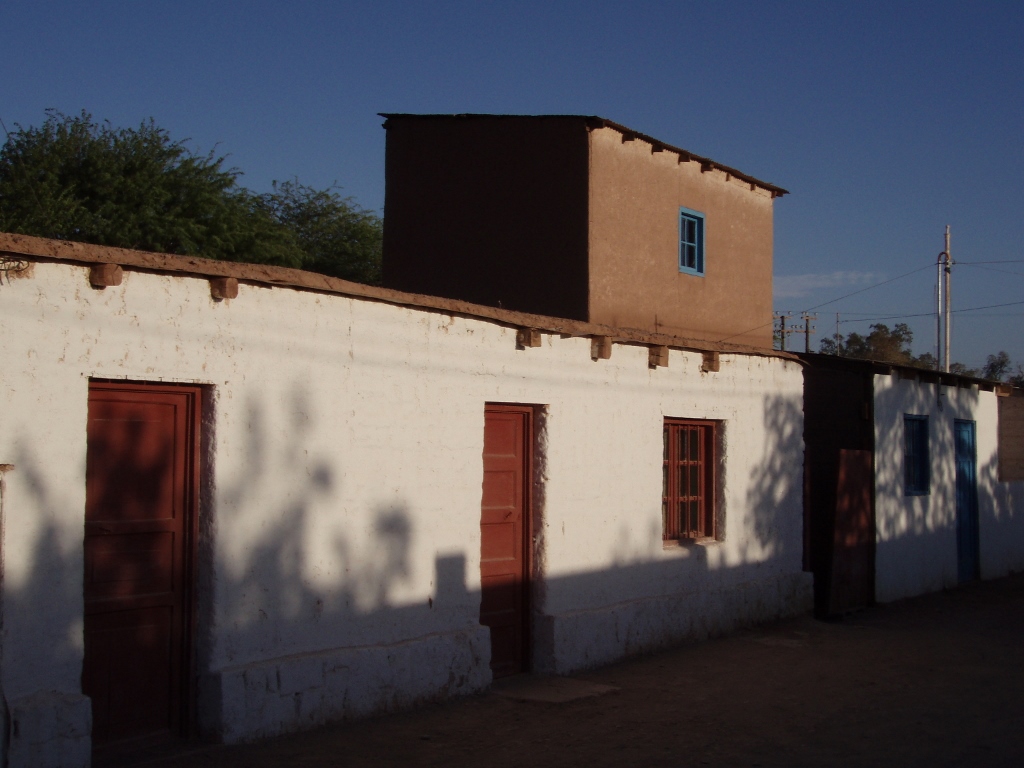 San Pedro de Atacama
San Pedro de Atacama
Needless to say, there are also numerous souvenir shops and the two of us bought not only some gifts, but also a couple of hats which we used in the following days. There is a main square in San Pedro as well and since this is an oasis, there are even some tall trees in the square that provide certain shade during the day.
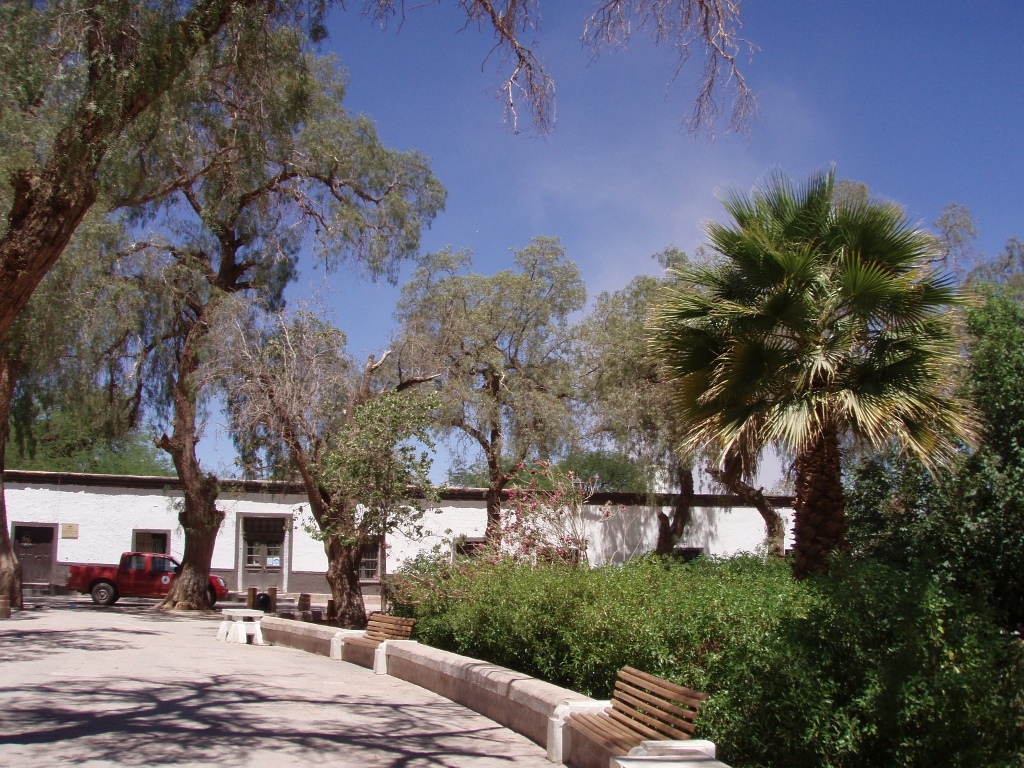 Main square in the village of San Pedro de Atacama
Main square in the village of San Pedro de Atacama
Beside the square there is also the Church of San Pedro made of the cardon cactus (Echinopsis atacamensis) which grows in Atacama and which is fairly solid and woody, and for this reason used in construction (see: https://www.svudapodji.com/en/salar-de-uyuni-peru-and-bolivia-summer-of-2005-part-2/). In addition to the cactus, mud was also used for the building of the church. The church is one of the few higher edifices we saw in the village and it also has a belfry. Most of it dates back to the 17th century. Additional feature which makes the building of the church interesting is that due to the lack of proper binding material, some leather belts were used to fix together the cacti and these belts may be still seen along the edges of the roof, while the roof itself is completely covered in mud which is now dry, of course.
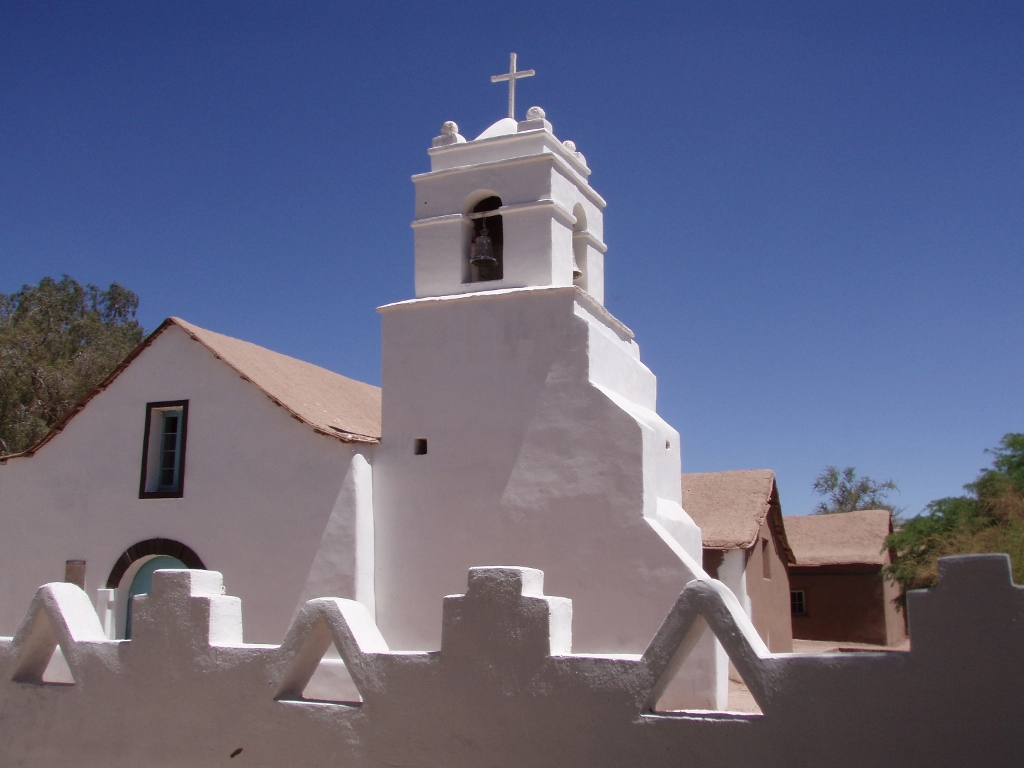 San Pedro Church at the village of San Pedro de Atacama
San Pedro Church at the village of San Pedro de Atacama
Already the first night we had to get up at 3.30 in the morning in order to be ready to be picked up by a mini-bus which was a little late as we were staying on the outskirts of the village and were the last ones to be collected. We were going on one of the excursions and this one was a trip to El Tatio geysers which are said to be the highest in the world – 4320 m a.s.l.
The journey took a little over two hours and the vehicle with all of its passengers kept bouncing all the time, but this trip stayed in my memory as unforgettable since I have never slept in a more uncomfortable position. When the mini-bus came to pick us up, it turned out that all the seats were occupied except for the two front ones next to the driver, so we sat there. I was in a sitting position, with my legs askew (as I was sitting in the middle and had to keep my legs on Sneza’s side of the vehicle), with my body which swayed backwards and forwards, left and right, as well as up and down, since the mini-bus drove along an often very bad dirt road, and yet miraculously I managed to sleep! This is what desperation and sleep deprivation do to one!
When we got to the geysers and got out of the vehicle, we were greeted by seriously cold weather, for we were in a desert, as well as at the very high altitude. The official reason for coming here this early is to watch the sunrise. What I believe is the real reason is that the fumes and steam coming out of earth, with few real geysers that spit water out into the air, can best be seen precisely at this time of the day. Later, when the sun shines and the temperatures of the air and the vapour become more similar, that steam can certainly not be seen. Still, to put this aside, the trip is absolutely worth the while and I often remember these images, despite some unpleasant details such as an episode of altitude sickness. Namely, ever since our departure from San Pedro, in addition to the uncomfortable drive, I felt rather nauseous and then I also got a headache. These are both some of the first symptoms of altitude sickness. As a matter of sheer coincidence, I happened to have an aspirin and when the sun came out, I took the aspirin, got back into the vehicle, climbed into my front seat and had a 15-minute nap lit by the rays of the sun rising above Atacama. I woke up as good as new and with no headache. Unfortunately, the altitude sickness with the same symptoms caught up with Sneza a little later on, but I was unfortunately out of aspirins. However, it all went well for her when afterwards we descended and went back to San Pedro.
But, let me go back to the beauty of El Tatio geysers which are thus called after a nearby volcano of the same name. El Tatio means “an old man who cries.” As for the geysers, this is in fact an entire field with numerous holes in it through which thermal waters come up to the surface. In other words, whoever feels cold may dip his hands and feet to get a little warm. Joking aside, this boiling water is dangerously hot and yet its steam was not enough for us to get warm without the help from the sun (when we got there it was around minus 4 degrees C). For this reason, most of the tourists stood around them tucked in their clothes which entailed jackets, caps, gloves and scarves, and yet everybody still felt quite cold.
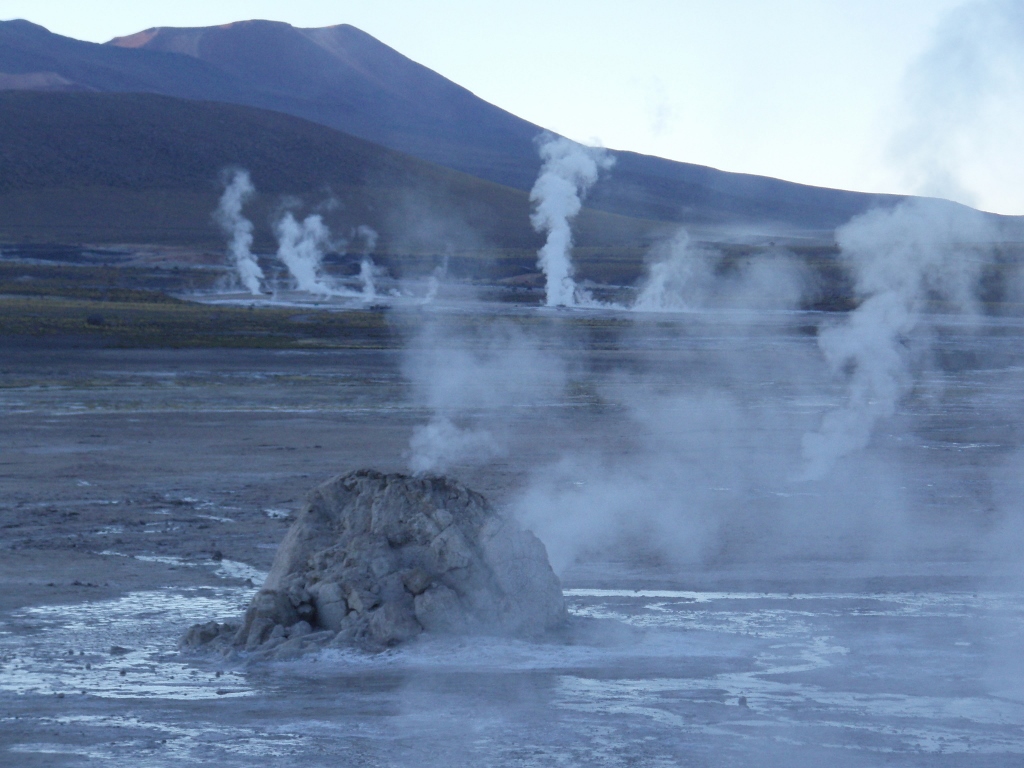 El Tatio geyser field at dawn
El Tatio geyser field at dawn
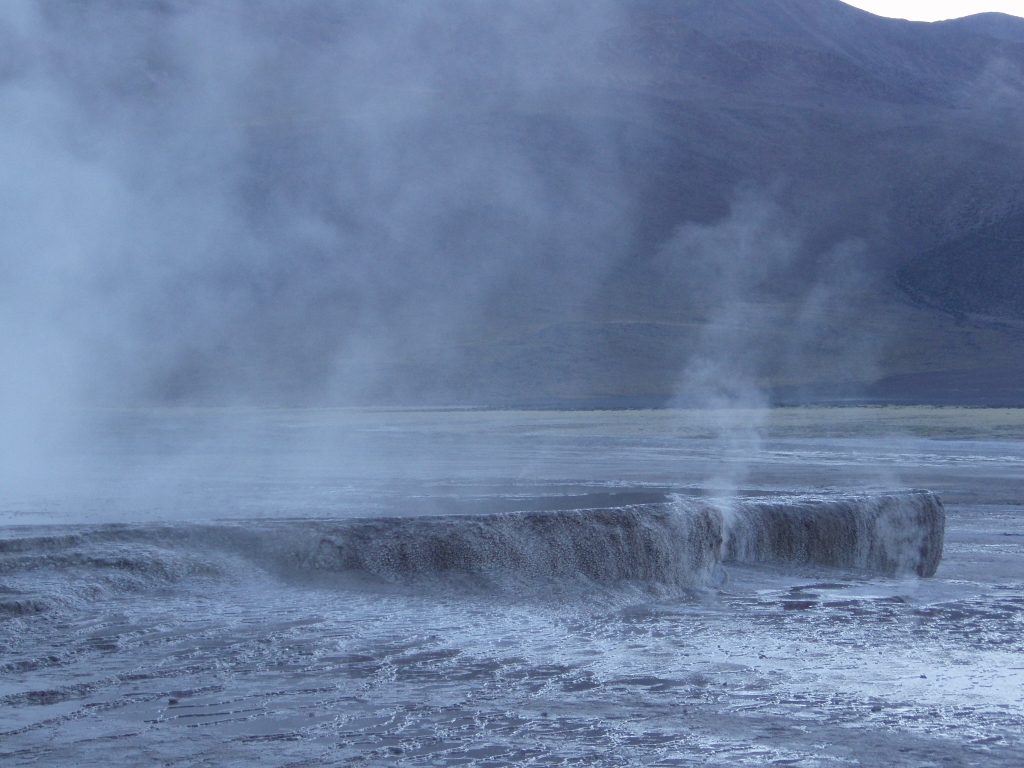 El Tatio geyser field at dawn
El Tatio geyser field at dawn
I was actually woken up from my napping by Sneza who invited me to go and try freshly boiled eggs. Namely, the trip included breakfast, with a particular emphasis on eggs boiled in geysers, but we certainly got more food, as well as tea.
As I’ve said, my headache went away and after a heartening breakfast I could enjoy in the beautiful scenes around me even more.
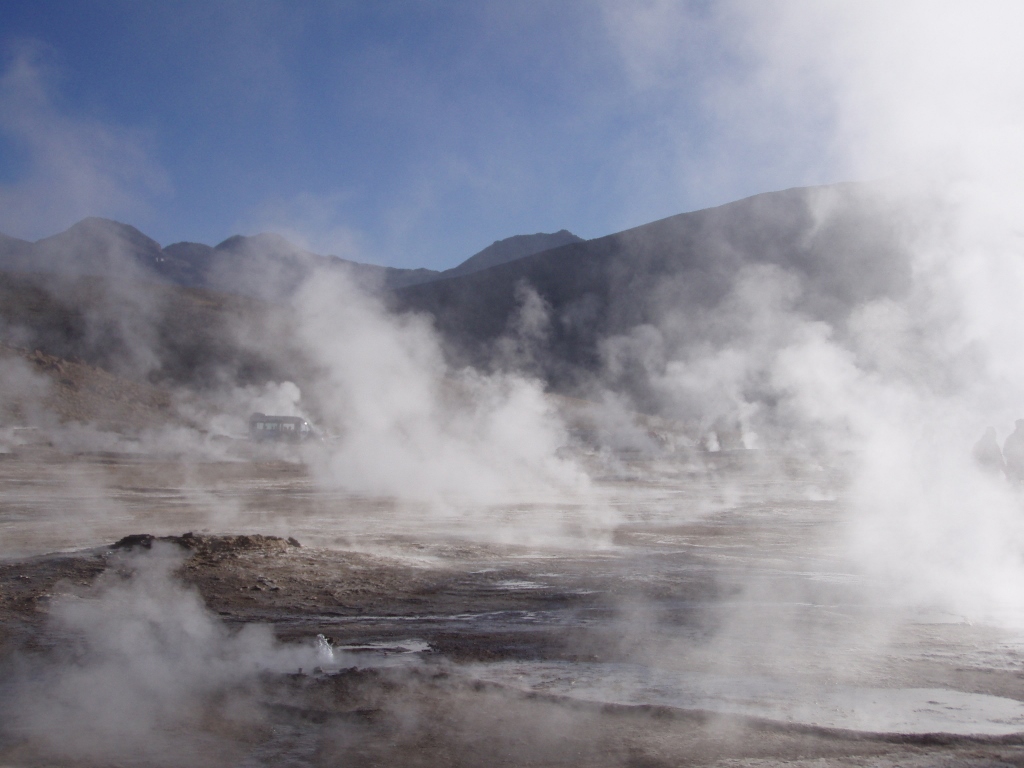 El Tatio geyser field after the sunrise
El Tatio geyser field after the sunrise
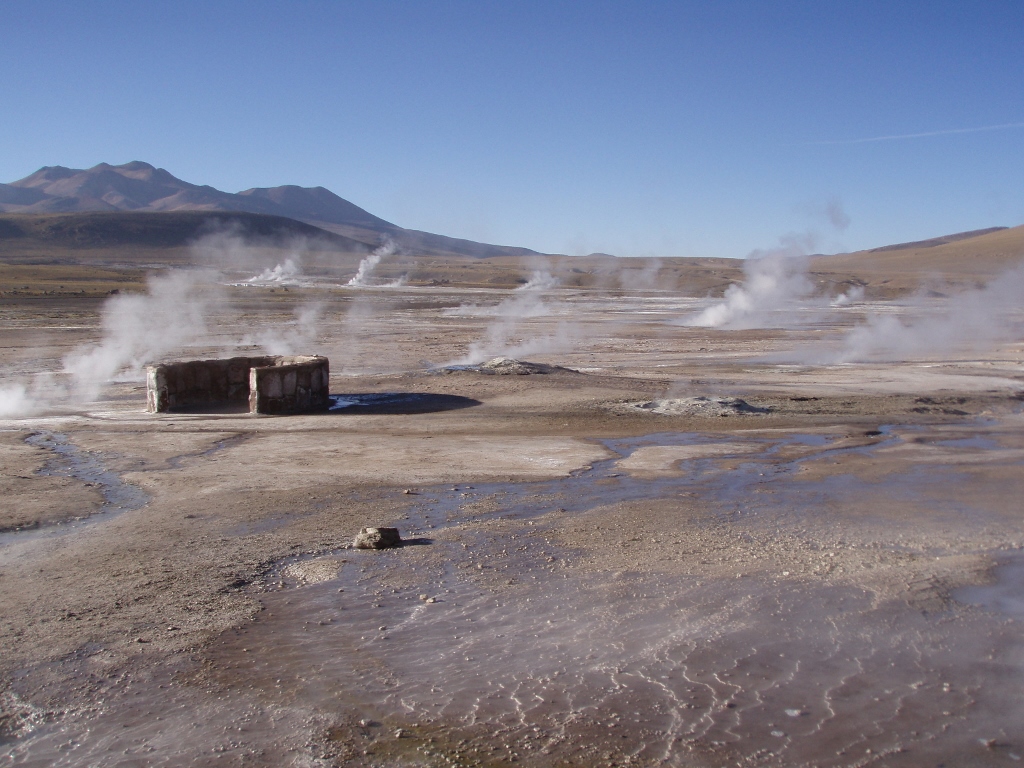 El Tatio geyser field after the sunrise
El Tatio geyser field after the sunrise
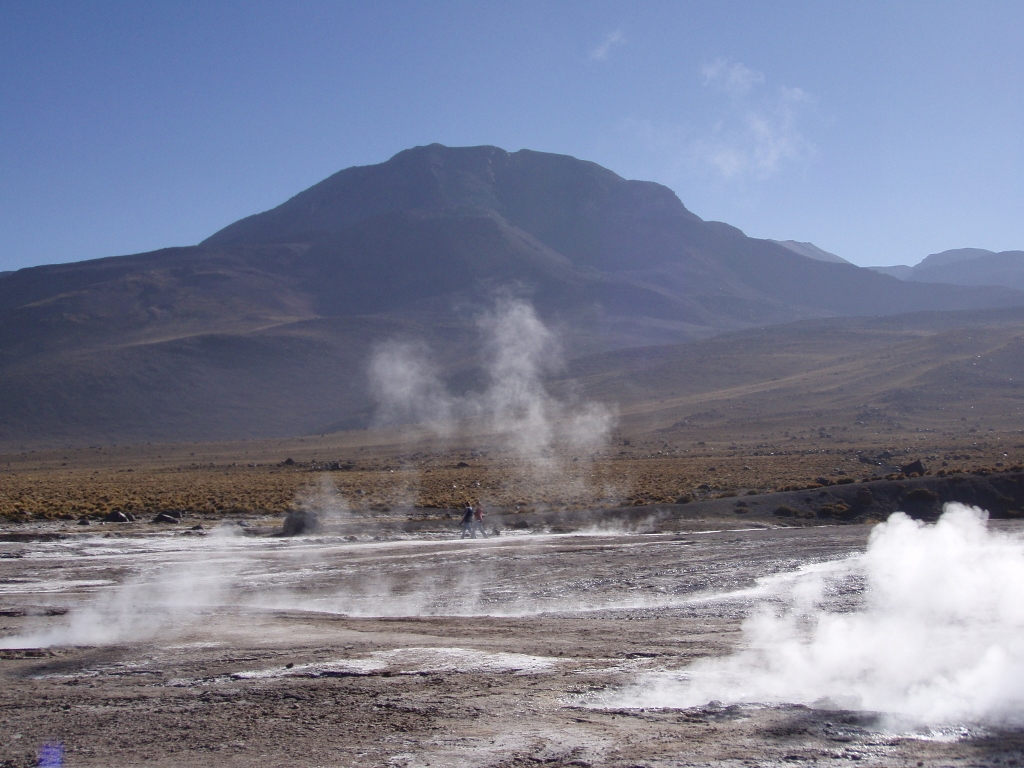 El Tatio geyser field after the sunrise
El Tatio geyser field after the sunrise
Not only were we refreshed for enjoying the nature around us, but we were also ready for what logically followed and that was a morning bath. We got to an open pool by the mini-bus. Namely, in one section there is a bigger hole in the ground where warm thermal water collects and the trip provides an opportunity to have a dip there. On its one side, that hole is properly supported by stones and concrete, and we could leave our wardrobe there to have it ready for when we get out. It is necessary to bring the swimming equipment and to change by the mini-bus. Sneza and I were ready and prepared, and we even had slippers in order not to walk over some mud. After changing and exposing ourselves to the coldness, we quickly got into the pool, but having in mind my experience from Peru (see: https://www.svudapodji.com/en/south-peru-peru-and-bolivia-summer-of-2005-part-2/) I said clearly both to myself and Sneza that we must not stay in the water for too long and that it was all just for fun. The fun was great and after some 10-15 minutes spent in the pleasantly warm water, we got out and very quickly got back in the full wardrobe – the underwear, T-shirts, sweaters, thermal pants, jackets, caps, scarves and gloves! Well, ok, by this time we didn’t have to use the gloves any longer.
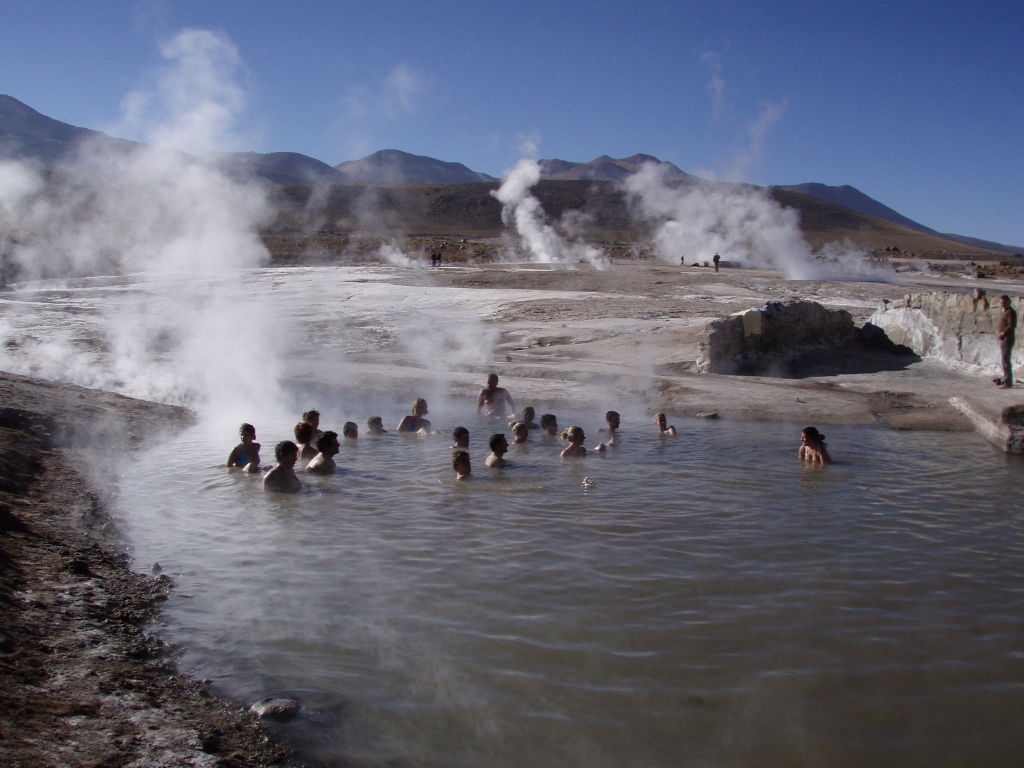 The “pool” at El Tatio geyser field
The “pool” at El Tatio geyser field
After the bathing break, the trip took us through the beautiful landscapes of the Altiplano (high altitude desert plain) and along our way we saw quite numerous herds of vicunas that grazed on the rare grasses that may be seen here. I also mentioned vicunas in the text on Peru, the link to which I have provided above.
Occasionally we stopped to see better some of the details, more evaporations from the ground or a smoking summit of a volcano suggesting the volcano was still active. This entire Altiplano landscape is something that I love dearly, ever since my time in Peru and Bolivia, and particularly when I visited Salar de Uyuni (Bolivia). As a matter of fact, this entire section of north Chile is situated on the other side of the Bolivian salt lake and this time we were practically constantly near the Bolivian border. San Pedro is the first inhabited place where one comes after crossing the border between Bolivia and Chile from the direction of the Salar de Uyuni (see: https://www.svudapodji.com/en/salar-de-uyuni-peru-and-bolivia-summer-of-2005-part-3/).
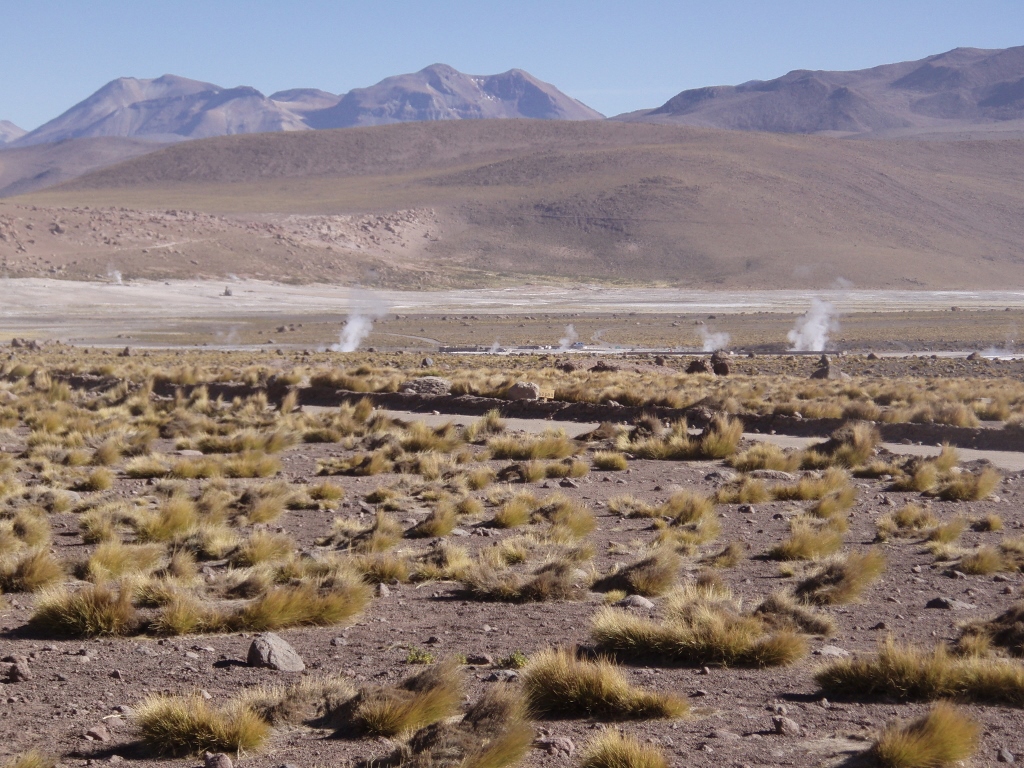 Altiplano and the smoking ground
Altiplano and the smoking ground
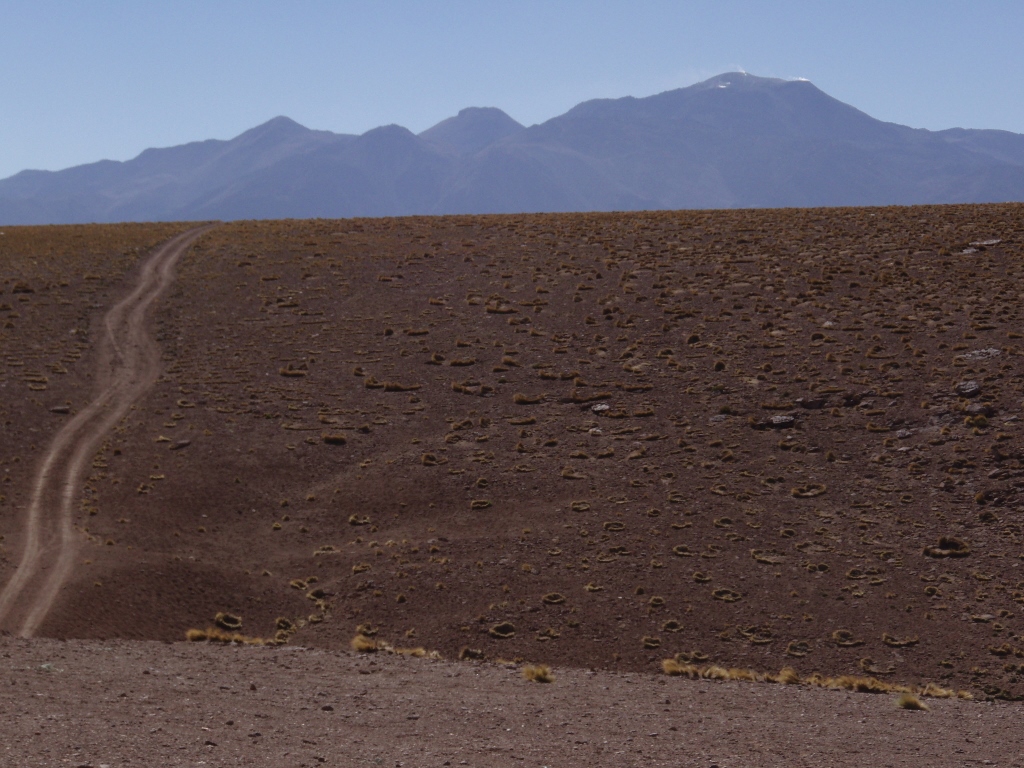 Altiplano
Altiplano
Other than volcanoes and the desert, every now and then we saw some watercourses that in a few places expanded into shallow ponds and at one such place we also saw a flock of flamingos feeding there.
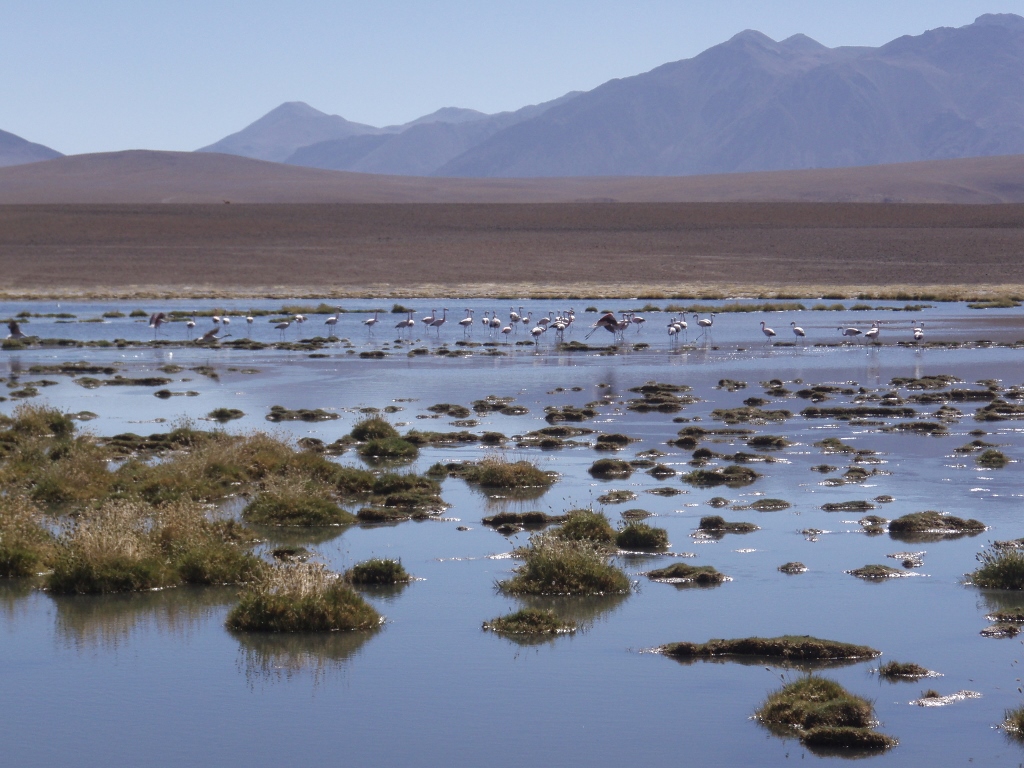 Altiplano and flamingos
Altiplano and flamingos
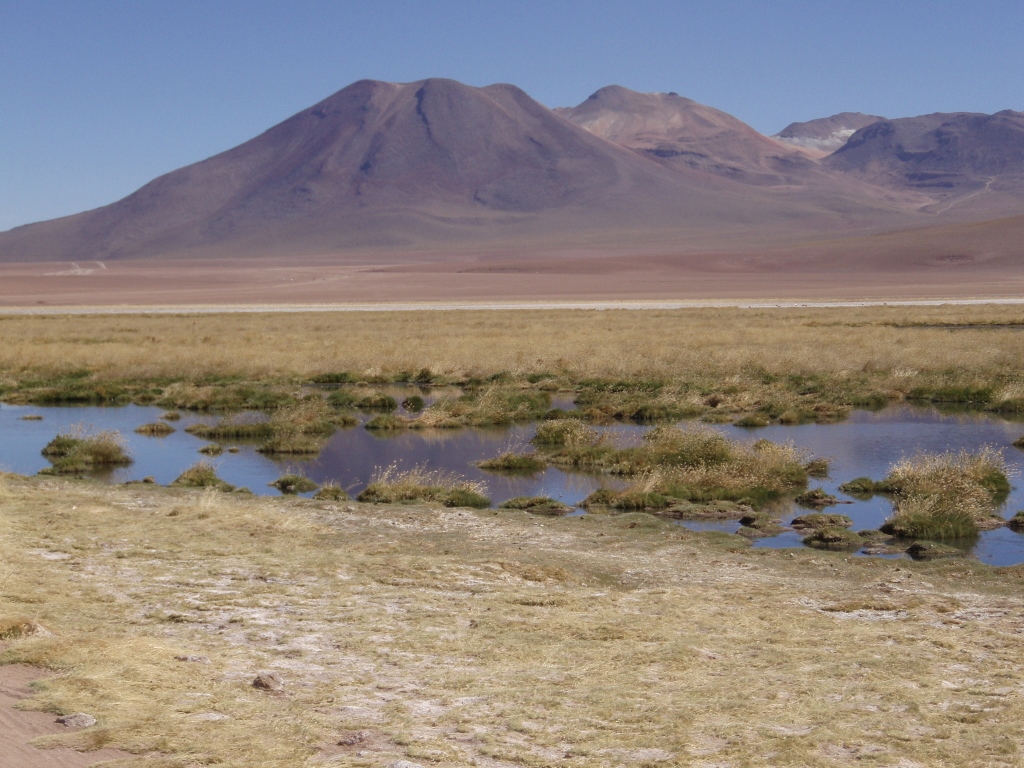 Altiplano
Altiplano
Then we started to descend. In some parts between elevations where the road was passing, despite the fact that we were in a desert, there was water which collected and provided fertile base for more grass, so we saw llamas grazing peacefully and stopped there to watch them for a while.
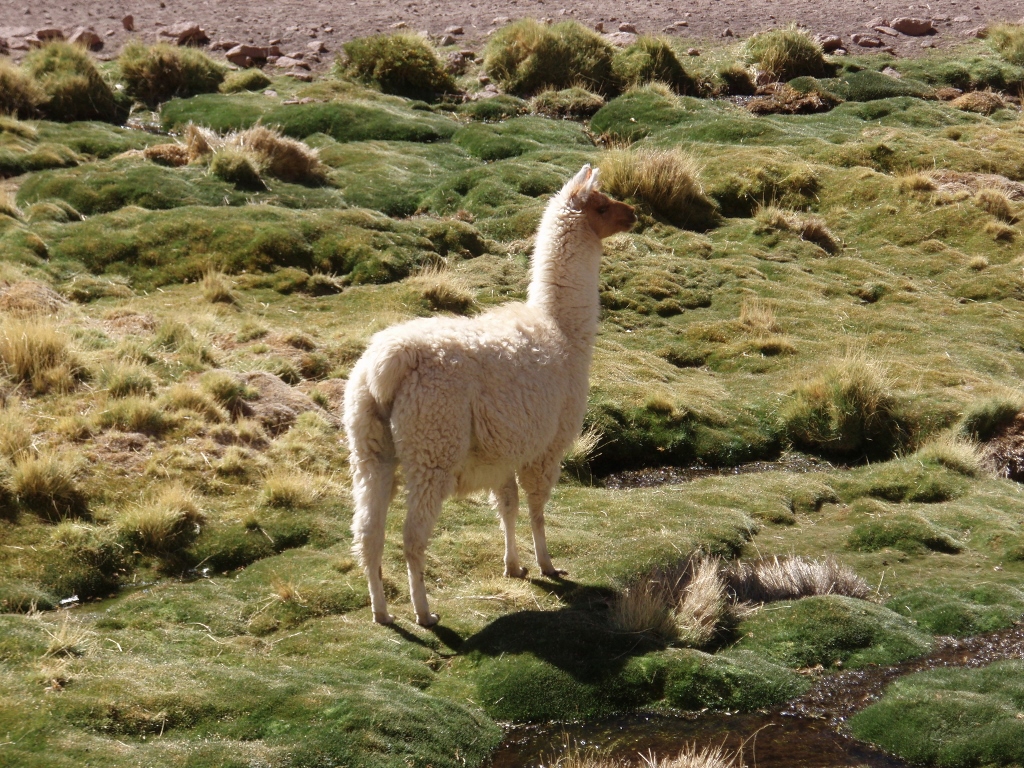 A llama
A llama
Now you can click here and see a short, albeit not very skilfully filmed and edited, video with scenes from the Altiplano.
Thus we eventually came to the village of Machuca at around 4000 m above sea level. In summer only 40 people live there. In the village we made a break and we could also taste llama meat at a restaurant. We tried the llama meat grilled on skewers and it was ok, but we also tried sopaipillas, fantastic fried pastry.
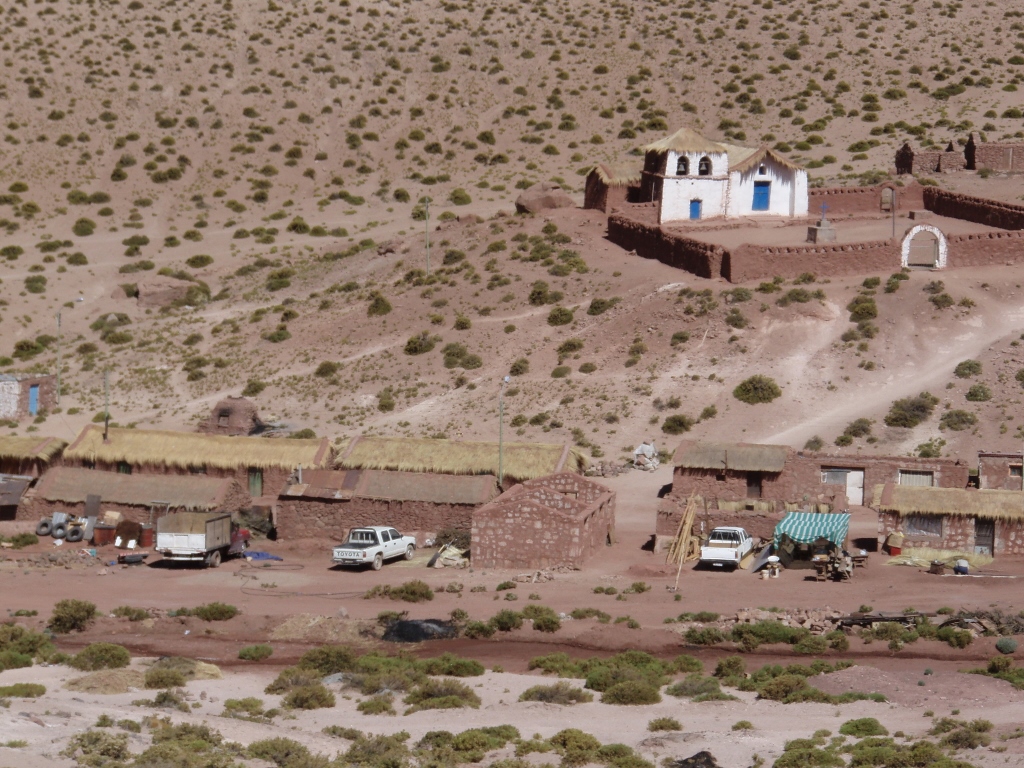 Machuca village
Machuca village
After returning to San Pedro de Atacama we visited a local museum and then sat in a restaurant at the central square with deep shade in order to recuperate. Namely, in the oasis we were greeted by serious heat that completely knocked us off our feet. Not a trace of the coldness we experienced in the early hours of the day. On account of insufficient sleep, intensity of impressions, convalescence after the altitude sickness episodes, as well as because of the 40 degree temperature span we covered within a matter of few hours, it was necessary for us to recover since already a couple of hours later we had another excursion that led us to the Valley of the Moon (Valle de la Luna).